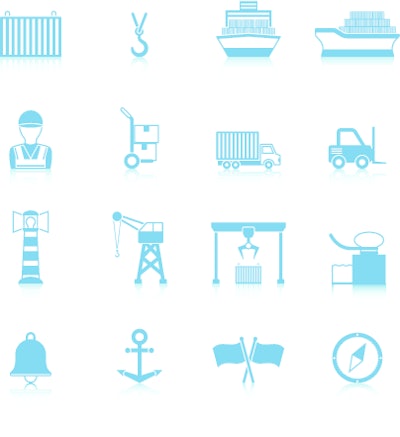
Incoterms—short for International Commercial Terms—were first published in 1936. The latest version, Incoterms 2010, became effective in January 2011. Simply put, Incoterms are rules that define the responsibilities of sellers (exporters) and buyers (importers) for the delivery of goods under sales contracts. They are published by the International Chamber of Commerce (ICC) and are widely used in commercial transactions.
According to the Export.gov website, Incoterms 2010 was a response to “new trends in global transportation.”
In addition, while the previous version of Incoterms were divided into four categories, the 11 pre-defined terms of Incoterms 2010 are subdivided into two categories based on the method of delivery.
The seven rules in the largest group can be used for any method of transport, whereas the four rules in the smaller group are used only for sales that are transported by water where the condition of the goods can be verified at the point of loading on board ship. Therefore, they are not used for containerized freight, other combined transport methods, or for transport by road, air or rail.
The following descriptions are found on Export.gov.
Rules for Any Mode of Transport
ExWorks (EXW): The seller fulfills his obligations by having the goods available for the buyer to pick up at his premises or another named place (i.e. factory, warehouse, etc.). Buyer bears all risk and costs starting when he picks up the products at the seller’s location until the products are delivered to his location. Seller has no obligation to load the goods or clear them for export.
Free Carrier (FCA): The seller delivers the goods export cleared to the carrier stipulated by the buyer or another party authorized to pick up goods at the seller’s premises or another named place. Buyer assumes all risks and costs associated with delivery of goods to final destination including transportation after delivery to carrier and any customs fees to import the product into a foreign country.
Carriage Paid To (CPT): Seller clears the goods for export and delivers them to the carrier or another person stipulated by the seller at a named place of shipment. Seller is responsible for the transportation costs associated with delivering goods to the named place of destination, but is not responsible for procuring insurance.
Carriage and Insurance Paid To (CIP): Seller clears the goods for export and delivers them to the carrier or another person stipulated by the seller at a named place of shipment. Seller is responsible for the transportation costs associated with delivering goods and procuring minimum insurance coverage to the named place of destination.
Delivered at Terminal (DAT): Seller clears the goods for export and bears all risks and costs associated with delivering the goods and unloading them at the terminal at the named port or place of destination. Buyer is responsible for all costs and risks from this point forward including clearing the goods for import at the named country of destination.
Delivered at Place (DAP): Seller clears the goods for export and bears all risks and costs associated with delivering the goods to the named place of destination not unloaded. Buyer is responsible for all costs and risks associated with unloading the goods and clearing customs to import the goods into the named country of destination.
Delivered Duty Paid (DDP): Seller bears all risks and costs associated with delivering the goods to the named place of destination ready for unloading and cleared for import.
Sea and Inland Waterway Transport
Free Alongside Ship (FAS): Seller clears the goods for export and delivers them when they are placed alongside the vessel at the named port of shipment. Buyer assumes all risks/costs for goods from this point forward.
Free on Board (FOB): Seller clears the goods for export and delivers them when they are onboard the vessel at the named port of shipment. Buyer assumes all risks/cost for goods from this moment forward.
Cost and Freight (CFR): Seller clears the goods for export and delivers them when they are onboard the vessel at the port of shipment. Seller bears the cost of freight to the named port of destination. Buyer assumes all risks for goods from the time goods have been delivered on board the vessel at the port of shipment.
Cost, Insurance and Freight (CIF): Seller clears the goods for export and delivers them when they are onboard the vessel at the port of shipment. Seller bears the cost of freight and insurance to the named port of destination. Seller’s insurance requirement is only for minimum cover. Buyer is responsible for all costs associated with unloading the goods at the named port of destination and clearing goods for import. Risk passes from seller to buyer once the goods are onboard the vessel at the port of shipment.



![Pros To Know 2026 [color]](https://img.sdcexec.com/mindful/acbm/workspaces/default/uploads/2025/08/prostoknow-2026-color.mduFvhpgMk.png?auto=format%2Ccompress&bg=fff&fill-color=fff&fit=fill&h=100&q=70&w=100)








![Pros To Know 2026 [color]](https://img.sdcexec.com/mindful/acbm/workspaces/default/uploads/2025/08/prostoknow-2026-color.mduFvhpgMk.png?ar=16%3A9&auto=format%2Ccompress&bg=fff&fill-color=fff&fit=fill&h=135&q=70&w=240)

